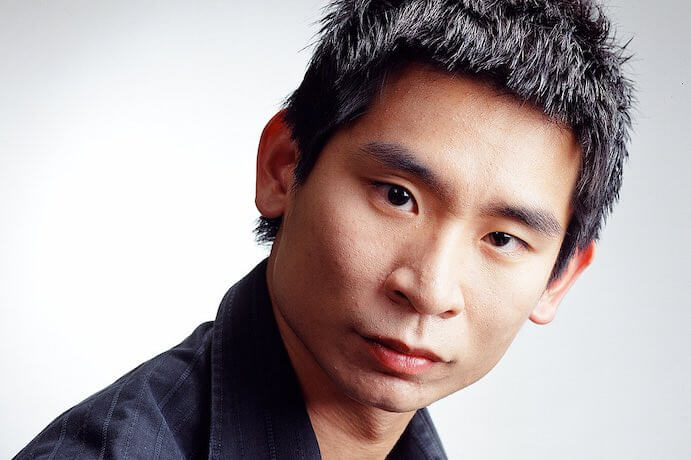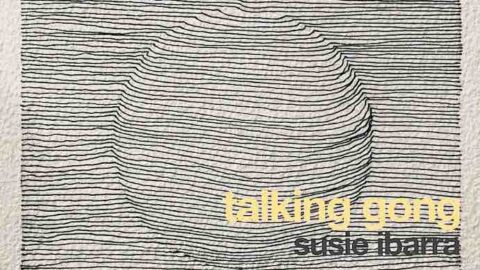On composer-percussionist Susie Ibarra’s portrait album, Talking Gong, the dialogue between these resonant metallic instruments is a social and spiritual activity that animates the performers’ stylistic versatility. Released on January 22, 2021 by New Focus Recordings, the album features a trio of Ibarra, flutist Claire Chase, and pianist Alex Peh exploring the intersections of Philippine culture, movement, and nature.
Susie Ibarra approaches the gongs and the drumset with extreme care towards affect and mood. Her ability to communicate between Kulintang, jazz, and contemporary classical genres creates a compositional and performative voice that few others can mimic.

Meanwhile, the other performers do an excellent job of interpreting Ibarra’s work. Claire Chase is brilliant in reading the composer’s intentions and transforming the flute into a tool of expressivity. Predominantly exploring extended techniques such as overblowing and tongue pizzicati, Ibarra’s compositions reserve the traditional flute sound for the most intimate moments of this album, making those sections even more beautiful. Pianist Alex Peh’s playing in Talking Gong mediates between the gongs as the messenger and the flute as the receiver, while his performance explores the piano as a struck object, a source of harmony, and a melodic force.
The album is bookended with four Merienda (Tagalog for “snack”), miniatures inspired by Ricardo Alvarado’s photography depicting black-and-white scenes of Filipinx migrant workers. Merienda 1 is soft and percussive, focusing on pointed, staccato sounds that create a dotted, shimmering timbral effect. Meanwhile, Merienda 2 takes on a more playful tone, quoting a theme typically associated with the circus. These two scrumptious miniatures prepare the audience for a deeply felt, transformative journey through the five central pieces that define this album.
The title track is centered less on the gong as an object and more on representing it as a communication vessel between the instruments. The piece starts with a call and response activated by the gong, answered with rhythmic and melodic fluidity by the piano, and then more freely by the flute, each with a distinct timbral character. The beginning section lacks a specific beat, allowing the listener to feel each player’s sound as its own entity in conversation with each other.

Peh then enters with a strict rhythmic-mode that is joined by the gongs as Chase creates a textural-based sensation that morphs nicely into a collective groove. Ibarra transitions to the drumset while Peh adds much fuller, more colorful harmonies off the rhythmic modes established initially. Chase contributes a burst of arhythmic energy, unifying the sound with her gritty, improvisatory overblow. Ibarra takes bits and pieces of the initial themes and develops them, exploring new textural possibilities within the melodic content as new worlds arise from the gongs’ patterns. The work ends beautifully, with almost complete rhythmic freedom, slow melodies, and airy textures.
Following Talking Gong is a demonstration of faith in the form of Paniniwala (Tagalog: belief). Ibarra connects with the metaphysical and esoteric through luscious harmonies that breathe freely. One can imagine Ibarra’s percussion as expressions of the wind and the piano making community out of this natural force. After a rich complexity of sounds, Dancesteps offers a moment of intimacy and contemplation. The work deconstructs a rhythmically-tight introductory theme into a more legato lullaby. Following this introduction is a breathtaking moment: the melody becomes otherworldly, and the rhythmic mode unwinds, giving space to naturally breathe and develop.

Kolubrí (Hummingbird) is a delightful piece for percussion that, according to the composer, emulates the Philippine hummingbird’s wings and its vocal learning songs. One can hear the wings slowed down in the steady rumbling of the toms. Similarly, Sunbird is an up-close exploration of this rare bird indigenous to the rainforest and woodlands. Ibarra makes these relationships explicit: one can imagine they have a magnified and drawn out view into both of these birds’ flight and song, developing these sounds as organically as nature herself would.
The album ends with the remaining two Merienda. Merienda 3 recaps the intimate moments witnessed before, while Merienda 4 harkens back to the tongue-in-cheek style of Merienda 2, now made profound through its reference to the Philippine bird sounds. These final two Merienda summarize the playful and heartfelt narratives that inform the album’s character.
What makes Talking Gong so fascinating is that Ibarra is earnestly knowledgeable and skilled in the Kulintang, jazz, and contemporary genres engaged within this album and its social heritages. The result is a sincere recording that communicates an entire world of land, history, movement, and community from which we in the U.S. can learn to better appreciate.
I CARE IF YOU LISTEN is an editorially-independent program of the American Composers Forum, funded with generous donor and institutional support. Opinions expressed are solely those of the author and may not represent the views of ICIYL or ACF.
A gift to ACF helps support the work of ICIYL. For more on ACF, visit the “At ACF” section or composersforum.org.
























